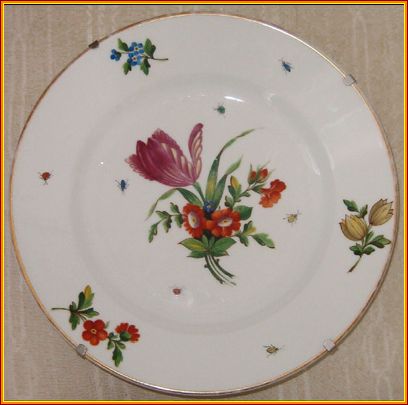|
Korzec
Genuine or counterfeit ? Original oder Fälschung ? |
 |
|||||||||||||||
 |
||||||||||||||||
|
If you were misled to this web site because you are searching something else, here I offer you as kind of consolation some general information about the word "korzec". Perhaps that's what you were looking for.
What means "Korzec" ? |
||||||||||||||||
|
Korzec is just a unit of capacity in Poland. In it's capital Warsaw it marks 120,6 liters, in Cracow only 43,7 liters. In Russia it's a unit of mass of nearly 100 kilograms. Confusing, isn't it? Thus, think first before you order a korzec of wodka ! But there is much more about it.
|
||||||||||||||||
|
Korzec is also a family name of thousands of people throughout the world, but mostly in America. They emigrated once from this miserable and war ridden country under a heavy rule of kinglike landowners of immense richness and they took the name of their ghetto-like village with them just to remember their provenance. All Italian jews wearing the name of a town as family name enjoy the same privilege. Korzec is a place east of Rovno on the Korczak River in former Wolhynia and today's Ukraine. It was first mentioned in 1150 and belonged to the Grand Duchy of Lithuania. Until World War I it was always owned by one of the Lithuanian Magnat Landowners, Princes and Counts, starting with Prince Korzetski and ending with Prince Sartoryski. One of them was Joseph Klemens Prince Sartoryski. Born 1740, he started in 1790 a chinaware production on his estate in Korzec, mostly tea and coffee services. They were marked on the back in different, but very clumsy ways "Korzec". During a first period they showed also as an unicum in chinaware what is called an "All-Seeing Eye" or the "Eye of Providence". Quiet witty one could ask what an "Eye of God" , having the same meaning is good for when concealed underneath a plate. I would say it is the best way to hide a secret, especially when the plate is served full of tomato soup. It remembers me at a secret policeman wearing his badge hidden behind the lapel of his jacket. Certain Brethren of Alchemy and Cabbala do so, too. The Czartoryski family did much better in buying antiquities elsewhere than producing precious table services by themselves. During the same year when the Korzec factory burned down, Prince Adam Jerzy Czartoryski went to Rome and bought among many other valuable things paintings of Leonardo da Vinci and Raphael. Hopefully they were genuine and not a fake like the suspected Korzec plate from above. Before I come to the point a few words more about the "All-Seeing Eye" inside a pyramide. Why this symbol on a Korzec plate? The internet is an immense and nearly free information fountain. After reading it all I hesitate to pronounce my newly aquired knowledge. It starts with Satanisme of old Egypt. Didn't Satan live in Libya until not long ago? Or in Iraq? Or pretty soon somewhere else? The "All-seeing eye" embellishes also the back of the One Dollar bill and is of no doubt a symbol of freemasonry. Here we are. Looking for Freemasonry in Poland Google.com presents it all: Prince Adam Czartorysky was one of the founders of the Lodge in Warsaw. He just missed the empty throne of Poland. We arrive by now at the Polish Constitution of May 1791. The first Korzec-plates are on sale ! Nearly all the leaders working on the Constitution belonged to the Lodges. Was it different in America? Palmer Hall, a thirty-third degree Mason says: "Of the fifty-five members of the Constitutional Convention, all but five were Masons." One could also meditate about similarities in hiding the all-seeing eye on the back of plates and of One-Dollar bills. Actually I never realized it until now. It's there since 1935, but it exists as The Great Seal since established by American Congress in 1782. That's eight years before it shows up quiet secretly underneath a porcelain plate on a dinner table in Wolhynia. After the second and third division of Poland the Czarina Catherine made an end to all Freemasonery in 1794. I wonder if that's the reason why the porcelain production line had to break down very soon. Unfortunately as already said the factory went on fire in 1797. There were remakes in other places. Even the eye in a triangle appears in an even more mediocre way again for a while. Useless to check all internet sites for clarity. I dit it. It inflates only confusion about the right timing of the porcelain marks and one had to learn the Polish language first. The above presented Korzec plate would not pay for the work I did, but I wanted to discover its roots. I'm convinced it was not just a product of some dirty Italian chiseler. I know where it came from before it ended up inside an Italian antique-shop. It belonged to one of the last Radziwill families residing in Rome before World War I, exactly Franziskus Pius Prince Radziwill and his wife Sofia former Countess Wodzicka. They had kept this little thing as a sweet memory of their homeland Lithuania. The clans of Radziwill and Czartoryski had some of their properties shoulder to shoulder. Actually Joseph Klemens, the chinaware maker got married in Annopol near Ostrog, an other Radziwill possession. Wladislaw, a son of Franziskus Pius from Rome, marries Jolante Princess Czartoryski in 1936. They had to do so for reasons of dynasty, married very young and gave birth to two, four or six children and more. A connection is evident. That's why I affirm its authenticity and rather believe that it just escaped attention in Poland and elsewhere because of its unparalleled destiny. Perhaps, somebody knows it better. The plate's diameter is approximately 24 cm. There are some stilistically confusing details. The seven dots of little insects are quiet senseless. They are painted in a symmetrical way (three in outer circle, four on the inside). They are not really covering any bad marks on the enamel as it is the case on very old chinaware. The Eye of God is applied as an overglaze mark. The stroke of the pencil is very accurate and much more elaborated then all the other known examples. I will show some at the end of this page. A falsifier would imitate the known and ugly original marks. It looks to me more like a special edition "just for friends" and maybe produced during the first decade after 1800 under the directory of experienced craftmen from other European porcelain factories like Sevres, Meissen or Viena. I still believe this is an unique thing and hope to unearth a second plate like that. |
||||||||||||||||
 |
||||||||||||||||
|
1790 - 1797 (2) No factory name |
1793 - 1814 ?(2) |
After 1800 in Red or Gold (3) Careless factory name Kotzec |
||||||||||||||
